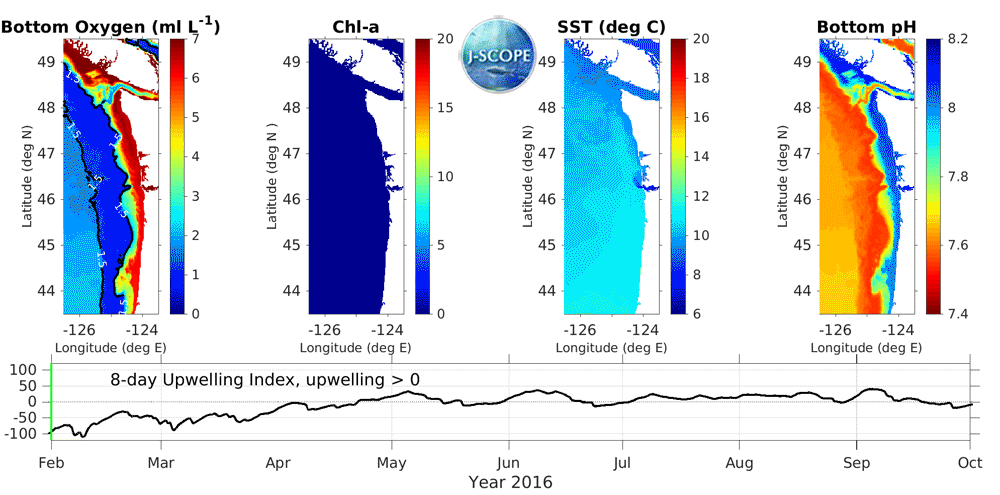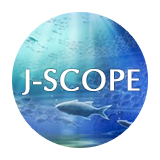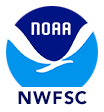Forecast Origin Dates
The J-SCOPE forecast system for Washington and Oregon coastal waters presents preliminary results for the 2016 upwelling season. The system predicts the timing of the spring transition, the cumulative upwelling index, sea-surface temperature (SST), primary production, chlorophyll stock, dissolved oxygen, and sardine habitat. The forecast for 2016 is composed of three model runs that make up an ensemble. Each model run is initialized at a different time (January 5, January 15, January 25), and has complementary forcing files from the large scale model CFS. The details of the wind forcing for each model run can be found on the California Current Indicators tab. For each of the standard predicted quantities listed above, we report the ensemble average anomaly as well as the relative uncertainty within the ensemble, which is defined as the standard deviation of the ensemble divided by the mean of the ensemble and is reported as a percentage of the mean. All of these fields are reported as monthly averaged anomalies from our new climatology. An anomaly is an indication of how different conditions are to what they have been in the past. In our case, relative to the conditions between 2009 and 2014. For more information about anomalies, please see the NANOOS Climatology App. These predicted quantities are key indicators for the California Current IEA report.
J-SCOPE forecasts 2016 will be a warm year, though not as extreme as 2015. Chlorophyll is forecasted to be low in the north and higher than average chlorophyll in some parts of southern Oregon, and in regions associated with the Juan de Fuca Eddy. Overall J-SCOPE forecasts higher oxygen concentrations (less hypoxia, occurring later) than in average years. Ocean conditions are forecasted to be suitable for sardine, though depressed stock abundance may mean that fewer sardine migrate to Pacific Northwest and British Columbia waters in the summer. The CFS forecasting tool that drives J-SCOPE forecasts a continuation of El Niño conditions in January - February 2016, with ENSO-neutral possible near the end of the summer, and PDO.

The movie above shows the J-SCOPE forecast for 2016, from ensemble model run #2 initialized on January 15. More information about the three panels above can be found by navigating the Chlorophyll, SST, and Oxygen tabs above. The panel on the far right depicts the evolution of bottom water pH over the forecast period. The pH field is calculated using an empirical relationship established by Alin et al., in prep. This work is part of a collaboration between Samantha Siedlecki, J-SCOPE, and the Ocean Acidification group at NOAA PMEL. The 8-day upwelling index is calculated using the method described in Austin and Barth (2002) and can also be found under the California Current Indicators tab above.








